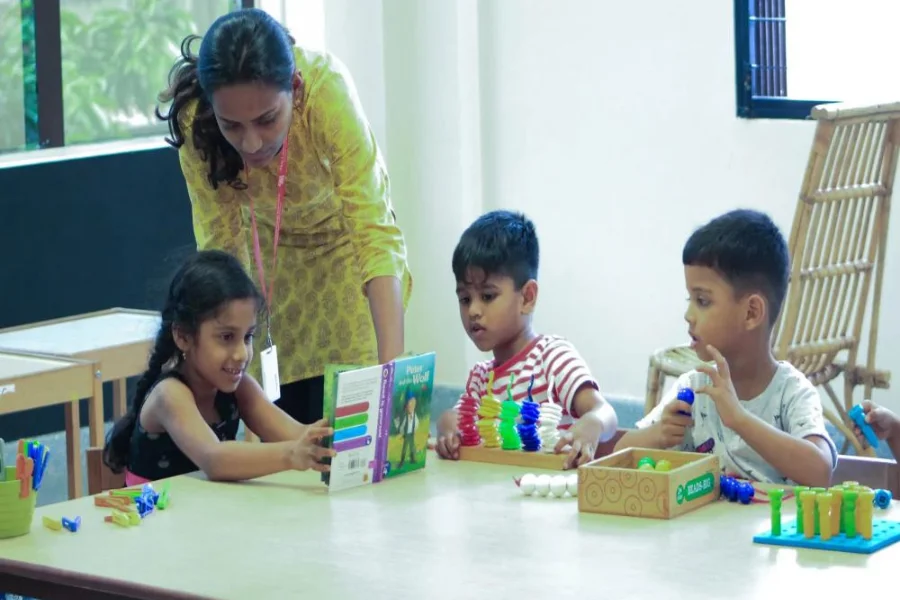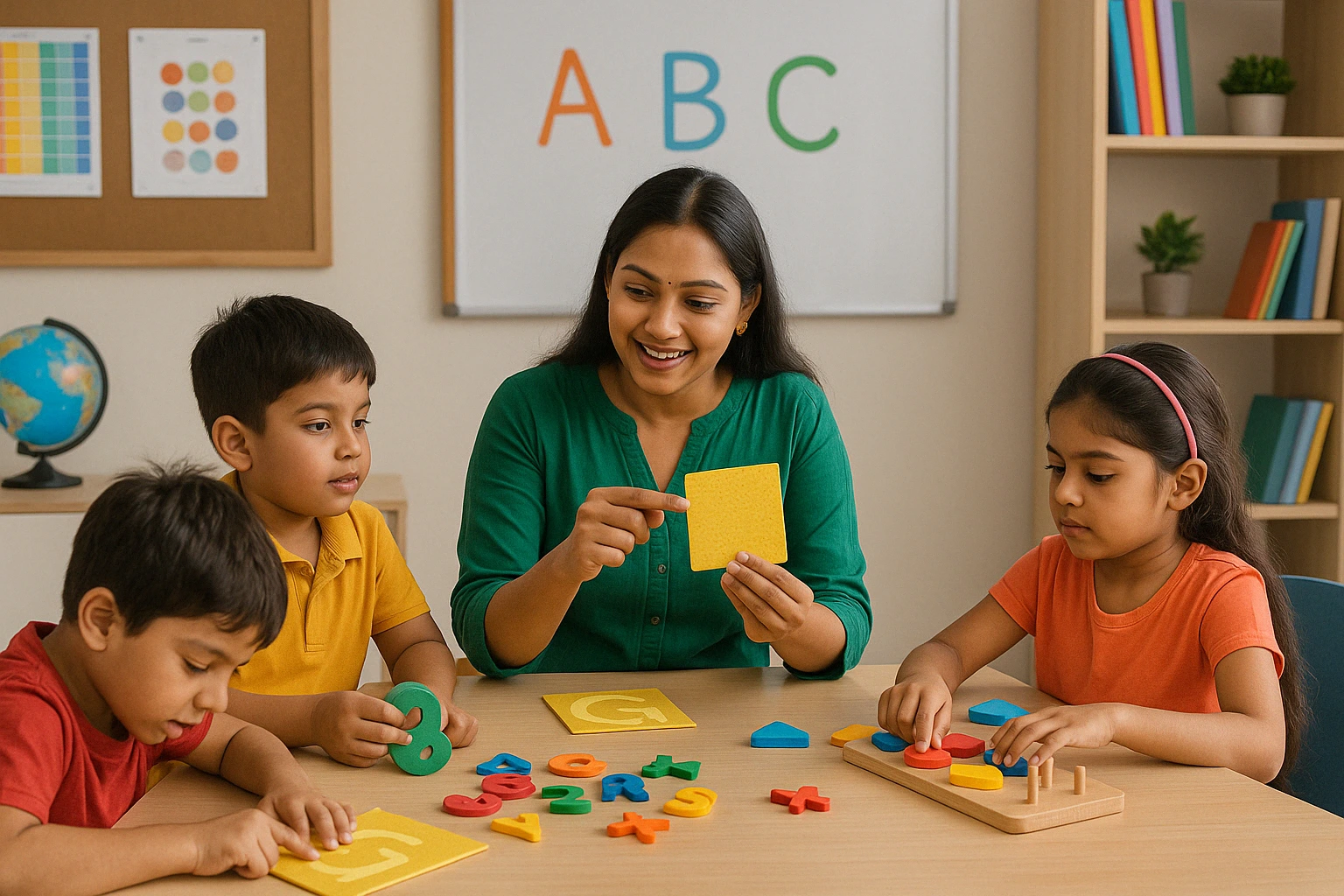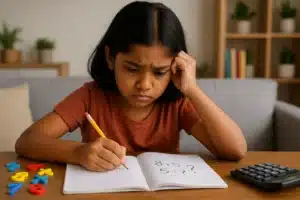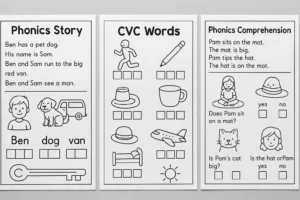
Source: ayushmantuitions
Every child has a set pattern of growth and development that helps track the child’s milestone achievements. Every child absorbs the information around them and processes it in a particular manner. However, in some cases, the brain’s capabilities of processing this information are faltered due to varied reasons. Learning Difficulties Examples such as the child possessing learning difficulties as the child cannot comprehend the information he receives correctly.
Essential learning skills of Reading, Writing, and Math can suffer a severe setback when the child has any learning difficulty. What seems extremely easy for some children can be a Herculean task for others.
Nonetheless, these learning difficulties do not determine the intelligence level of the child, and most of the time, children with a particular learning disability are highly talented. To help the child overcome these learning challenges the exclusive learning needs of the child must be determined and accordingly a structured educational plan must be devised to facilitate their learning and promote their holistic progress.
In this article, we shed more light on the miniscule attributes of Learning Difficulties Examples and the steps taken to enhance the learning outcomes for all children.
For more Details on the LD Course , Call / WhatsApp at +919321024137 / +919869866277
To Download the Brochure of the LD Course, Click Here!
What are the Learning Problems of Students?
Students and their learning issues may appear in many kinds and usually impact their academic achievement. Most of the children show signs of learning disabilities during their Early Childhood. It is when the child despite being of the correct age finds it difficult to achieve simple basic learning skills that form the foundation for a successful lifetime learning.
The most common Learning Difficulties Examples that affect reading skills, coordination skills, and math skills are called Dyslexia, Dysgraphia, and Dyscalculia, respectively.
Here are some of the key learning problems students may face:
Dyslexia
Have difficulties with reading, spelling, and understanding written language.
Dysgraphia
Spelling, writing ability, and written work challenges
Dyscalculia
Difficulties in numbers, basic math skills, and problem-solving.
ADHD
Attention issues, staying on task, and controlling desires.
Nonverbal Learning Disabilities
Struggles with visual-spatial tasks, coordination, and social skills.
Memory and Processing Difficulties
Trouble remembering instructions or processing information quickly.
Language Disorders
Challenges with understanding or using spoken and written language.
Executing and Completion Problems
Children might plan tasks but find it difficult to complete them within their dedicated time limits.
Social Interaction Issues
As children hesitate to mingle freely amongst other children, their social interaction skills are severely affected, deterring them from making meaningful bonds.
Systemic Barriers
Discrimination or lack of support in the school system may also contribute to learning difficulties.
These Learning Problems of Students are based on variety and impact, but with the right support and strategies, many students can overcome them and succeed in their learning atmospheres.

Source: freepik
How to Identify the Learning Difficulties of Students?
Learning difficulties affect the crucial learning skills of the child in Reading, Writing, and Maths as their processing power of information is meagre. When a child despite reaching the desired age does not display suitable progress with regards to academics can raise a concern that the child might be suffering from a Learning difficulty.
Possessing detailed understanding of various learning difficulties including the causes, symptoms and Remedial Interventions helps to identify the learning difficulties precisely.
When Learning Difficulties Examples are detected at an early stage it helps to implement the remedial interventions sooner helping children enjoy the process of learning thereby progressing gradually in academic as well as other developmental domains.
Here is how to identify learning difficulties in students:
Recognizing Potential Signs
Watch for ongoing patterns such as:
- Academic struggles: Difficulties with math, reading, writing, or understanding new concepts
- Behavioural and emotional issues: Impulsivity, inability to concentrate, difficulty following directions, or an ability to be easily upset.
- Skill-specific difficulties: Poor reading fluency, problems with comprehension, or retaining information.
- Motor skill issues: Trouble with coordination or fine motor tasks like handwriting.
- Social challenges: Struggles reading social prompts, interacting with people, or taking part in group activities.
- Self-esteem concerns: Low confidence, avoiding schoolwork, or frequent complaints about not being “smart enough.”
Formal Assessment
- Academic testing: Standardized tools to measure skills in reading, writing, and math.
- Intelligence testing: Helps identify any gap between intellectual ability and academic performance.
- Other assessments: May include evaluations of language, motor skills, or processing abilities.
- Medical evaluation: To figure out medical conditions like hearing or visual difficulties that could affect learning.
When Learning Difficulties Examples are detected at an early stage, it helps educators to administer ideal remedial interventions early that help to prevent any further damage and help to eliminate any learning gaps. This helps to boost the morale of the child, assuring him that he too is capable of being an important part of the Classroom and receiving equal opportunities to succeed in life.
How can you Support a Child who has Learning Difficulties?
Children with Learning disabilities are gifted individuals full of talents and unique skills but face difficulties in acquiring simple learning skills of reading, writing that leads to a lot of dissatisfaction, frustration and they end up thinking very lowly of themselves.
Helping and uplifting a child with learning disabilities demands a lot of unwavering dedication, keen interest in following up with the progress of the child and detailed understanding of the child’s overall needs.
Keeping in mind the exclusive needs of the child an education plan should be laid out that takes care of the issues that deter the child from acquiring the skills essential for learning.
For more Details on the LD Course , Call / WhatsApp at +919321024137 / +919869866277
To Download the Brochure of the LD Course, Click Here!

Foster a Positive and Supportive Environment
- Emphasize strengths: Celebrate what they do well to build confidence and motivation.
- Promote a growth mindset: Encourage them to view mistakes as part of learning and progress.
- Empathize genuinely: Provide the child with genuine concern about their struggles, assuring them that the teacher is all there to help them.
- Be patient and understanding: Do not show any desperation or sadness when there is little or no progress at all.
Collaborate with Educators and Specialists
- Advocate for their needs: Work closely with teachers and specialists to ensure they get appropriate support.
- Attend IEP meetings: Be aware of your child’s IEP. If you have any issues or problems, consult the concerned professional or teacher and clear your doubts.
- Stay updated: Keep track of their academic and emotional progress to adjust support as needed.
- Seek professional help: Seek advice from counsellors, reading experts, or therapists when extra help is required.
Implement Effective Strategies
- Break down tasks: Provide children with easily manageable tasks and problems without burdening them.
- Use visual aids: Charts, images, and diagrams can make information clearer.
- Try multi-sensory learning: Combine hearing, seeing, and doing for better engagement.
- Give clear instructions: Use simple, direct language to help them understand tasks.
- Be on your toes to include innovative ideas: Offer the child innovative, engaging activities that help them retain that concept for a longer time.
- Use technology: Incorporate innovative activities that help to grab the child’s attention for a longer time, ensuring better learning.
- Focus on effort: Praise persistence and improvement, not just results.
Encourage Social and Emotional Development
- Support social connections: Help them join activities where they can build friendships and feel included.
- Highlight their interests: Focusing on hobbies and passions can boost confidence.
- Teach self-advocacy: Help them understand their needs and how to ask for help.
- Promote independence: Let them make choices and take on responsibilities at their level.
Take Care of Yourself
- Supporting a child with learning difficulties can be demanding.
- Find support: Make connections with friends, parents, or experts who have been through similar experiences.
- Prioritize your well-being: You will help your child if you take care of your emotional and mental health.
A kid with learning disabilities benefits from each step you take to help them feel heard, understood, and prepared for success.

Source: freepik
How to Teach Someone with Learning Difficulties?
Undergoing an ideal Special Ed Program is the first step to teaching someone with learning difficulties. Children with learning difficulties must be dealt with in a specific manner, so the teacher must be well-versed in teaching pedagogies and methodologies that support their learning, ensuring that learning is a joyful process for them.
Here are some effective ways to teach individuals with learning difficulties:
Use multi-sensory methods
Combine visual, auditory, and practical activities to reinforce learning.
Break down information
Teach in small, manageable steps and repeat key concepts.
Give clear instructions
Use simple, direct language and check for understanding.
Be patient and encouraging.
Celebrate small wins to build confidence and motivation.
Use assistive tools
Advanced technology like text-to-speech apps or graphic organizers.
To get practical skills in this field, consider the Learning Disability Course offered by Vidhyanidhi Education Society (Govt. Regd.). This Learning Disability Course prepares teachers and parents with tools to support struggling students effectively. Enrol in the Learning Disability Course to make a real difference in kids’ learning journey.
Transform learning challenges into strengths with Vidhyanidhi’s expert LD course today!
For more Details on the LD Course , Call / WhatsApp at +919321024137 / +919869866277
To Download the Brochure of the LD Course, Click Here!
Learning Difficulties Examples
FAQs
Can Learning Difficulties go away?
Learning difficulties, unfortunately, are a lifetime phenomenon that do not disappear from life; nonetheless, their intensity might vary and can be managed effectively with therapy.
Do Learning Disabilities Get Better with Age?
Learning disabilities are neurological conditions that might vary as you grow but they do not diminish with age but children develop skills to cope with the struggles caused by it efficiently.
How to Motivate a Child with a Learning Disability?
Celebrating the child’s smallest achievements and appreciating them publicly helps to motivate the child assuring him that he is at par with the others.



